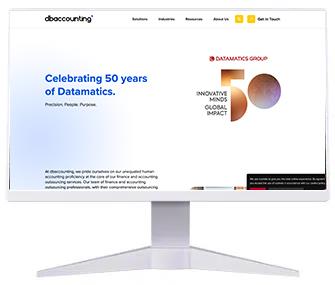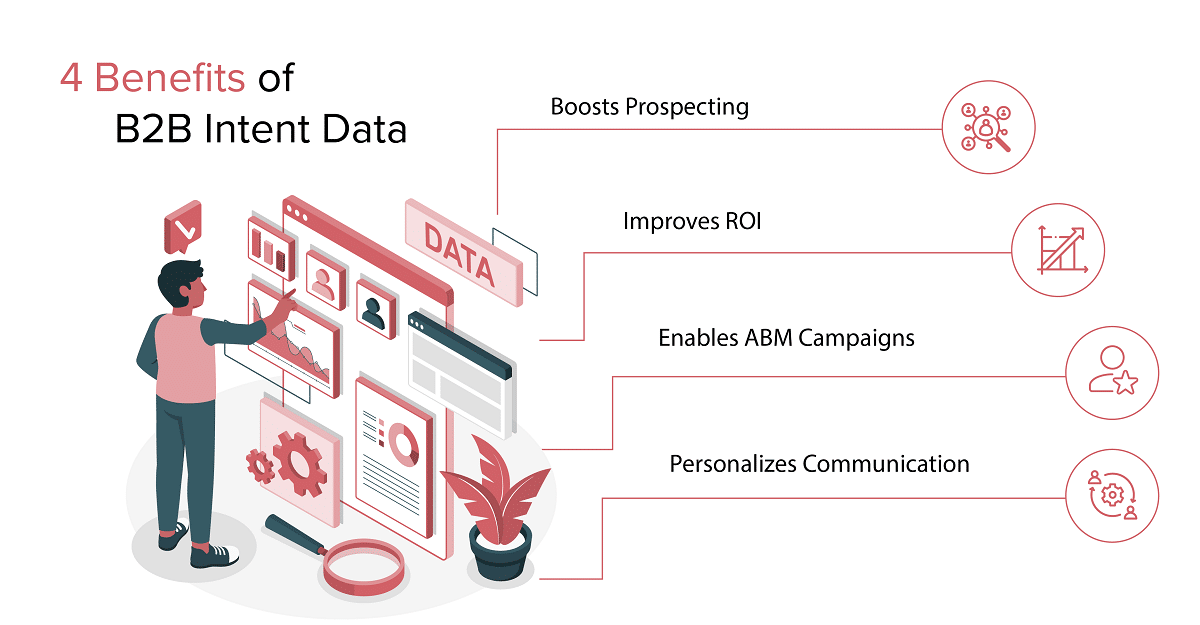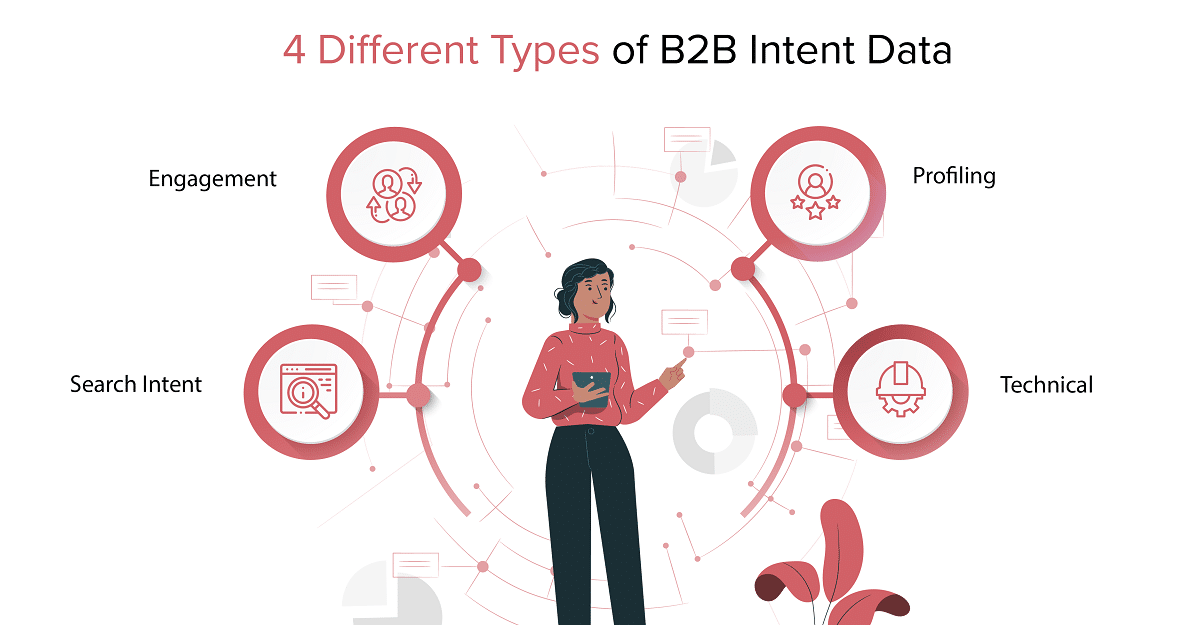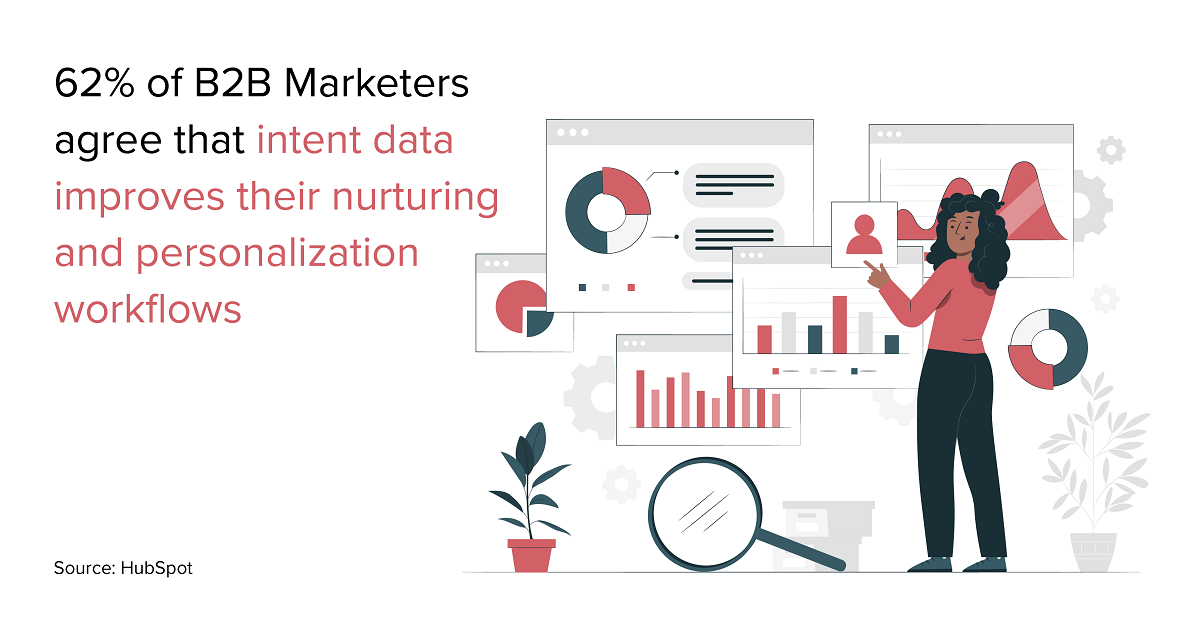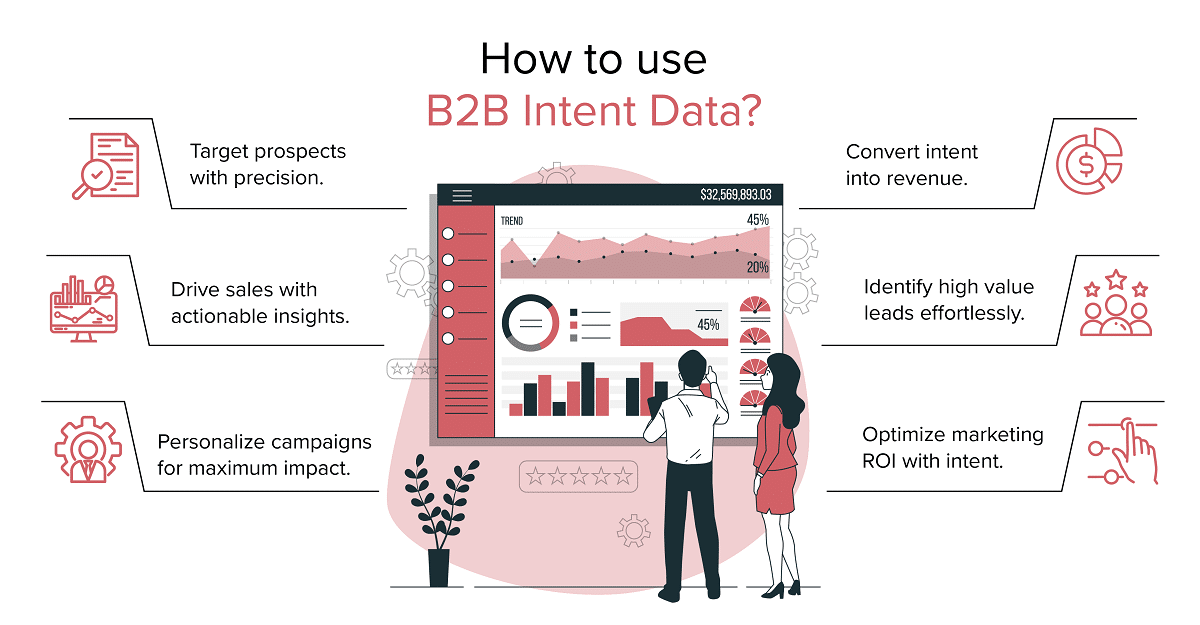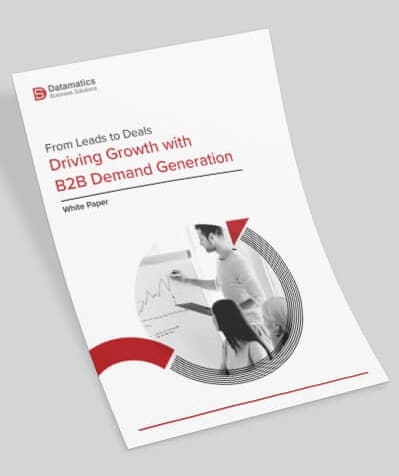Did you know that a report by Demand Gen states that 97% of businesses reported a positive ROI from using B2B intent data? That’s like unlocking a hidden treasure chest of opportunities!
B2B intent data is not just a fancy buzzword; it’s a game-changer backed by solid numbers. Imagine knowing exactly which prospects are actively researching your industry, comparing products, or showing signs of readiness to buy. Armed with this knowledge, you can tailor your marketing campaigns, craft personalized messages, and deliver the right offer at the perfect moment. It’s like hitting the bullseye every time!
B2B intent data takes the guesswork out of your marketing and sales strategies. It helps you focus your resources on the most promising leads, increasing your chances of closing deals and driving revenue. So, whether you’re a marketer, salesperson, or business owner, B2B intent data is your secret sauce for success. It’s the key to understanding your customers on a deeper level and staying one step ahead of the competition.
What is B2B Intent Data?
B2B intent data refers to information that reveals the buying intentions and interests of prospects. It provides insights into the online activities, behaviors, and signals that indicate a prospect’s readiness to make a purchase or engage with a particular product or service.
This data is typically collected from various sources, including website interactions, content consumption, search queries, social media activities, and more. Businesses can learn a lot about their target audience’s preferences, needs, and pain points by analyzing these signals.
Importance of B2B Intent Data for Businesses
B2B intent data helps businesses identify potential customers who are actively researching, considering, or showing intent to buy. It allows companies to prioritize their efforts, focus on highly qualified leads, and tailor their marketing and sales strategies accordingly.
For example, if a business discovers that a particular company or an individual has been extensively researching topics related to their product or service, it indicates a strong intent and a potential opportunity for engagement. Armed with this information, sales and marketing teams can reach out with personalized messages or targeted offers, increasing the chances of conversion.
Intent data is a powerful tool for businesses looking to optimize their lead generation and lead nurturing strategies, customer acquisition, and revenue generation efforts. It enables them to be proactive, strategic, and customer-centric in their approach, ultimately driving better results and fueling business growth.
Different Types of B2B Intent Data
One way to think about intent data types is to imagine them as hits on a target. You get hits in the middle (closer to the bullseye) that are certainly and closely related to your company. The hits are less precise as you move farther out, which means there is less of a connection to what you sell.
Here are the four main categories of intent-based targeting data and how they ‘score’
1. Search Intent
Search intent is created when someone uses a search engine like Google or Bing to look for a specific product or service. This counts as a bullseye because it can demonstrate a clear connection to the product you are selling. Of course, different search terms may have different connotations. That is why we have brilliant SEO specialists who adjust tags and content in accordance with a plethora of enigmatic rules.
2. Engagement
Engagement data also ranks highly. It reflects actions taken by potential customers, such as when they browse your website, share your content, or submit an email subscription form. The lead conversion funnel can be made more effective by looking at engagement data.
3. Profiling
We are now moving away from the target’s center. Profiling data is information gathered about various businesses and industries. Sales folks can generate leads that may be searching for their products or services by compiling a list of company types, employee counts, locations, revenue, and other factors.
4. Technical
This is primarily a B2B tool with the same quality as profiling data: leads have a slim chance of being interested. Technical intent data is collected through surveys, online forms, website interactions, social media monitoring, and data partnerships to gain insights into the technological needs, preferences, and priorities of potential customers.
How is Intent Data Collected?
With every new technology, there are more ways for marketers and salespeople to gather information on prospects. Even so, each source will fit into one of these categories:
First-Party
This data is collected directly from your own digital properties, such as your website, mobile app, or email interactions. It includes data from form submissions, content downloads, page visits, and engagement metrics. First-party intent data provides insights into the specific actions and interests of individuals who have interacted with your brand.
Second Party
This is a fresh take on intent data marketing in which Company A gathers information about Company B based on data supplied by customer interactions with Company A. That’s a fancy way to describe businesses like G2.com or Glassdoor.com. For instance, G2.com (“Company A”) reviews a variety of tech firms, and when users look up additional details about one in particular (“Company B”), G2 logs that information.
Third-Party
Third-party intent data is obtained from external sources, such as data aggregators, publishers, or b2b data providers. It includes information about user behavior and engagement across multiple websites and platforms. Third-party intent data can offer a broader view of the overall market and help identify potential prospects who are displaying relevant purchase intent signals.
Key B2B Intent Data Considerations
Is all data regarded as intent data? The simple answer is “no.” Data exhaust, also known as the enormous amounts of unprocessed data flowing daily towards your digital channels, is something that B2B marketers should be very cautious about.
To avoid misunderstandings, ensure that your marketing experts can recognize the following intent marketing data characteristics:
• Recency
This first characteristic relates to accurately identifying how recently a prospect profile interacted with the website content.
If it took your team longer than a week to get in touch with a lead who requested a follow-up action, it’s likely that they already chose one of your competitors. So, prepare to strike first and strike quickly.
• Frequency
Frequency refers to the ability to filter and identify which users are constantly visiting your website for a limited time.
There is a good chance that a user is considering your offer for their purchasing journey if they are browsing your case studies, white papers, and pricing page. You should get in touch with them at this point to find out their intentions.
• Engagement
This indicator is likely the most obvious. It depends on how much a specific user expresses interest in a particular section or piece of content on your website.
Engagement responses can range from being passive, like signing up for your email nurturing campaign, to being very active, like a back-and-forth conversation with a chatbot on your website. Everything depends on the strategies you have on hand and your capacity to launch an effective follow-up plan.
When working with intent data, take into account all of these indicators. While it may be difficult to pinpoint each characteristic at first, it will become much simpler to do so once your organization has adopted a data-based culture.
Conclusion
B2B buyer intent data not only provides the signal for when marketers and sales reps should accelerate, but it also explains how fast they should go, provides advice on how to navigate each curve, and offers valuable support throughout the entire race. So, activate the intent data engine and take your marketing efforts to the next level.
If you wish to explore how B2B intent data can integrate into your marketing and sales approach, write to us at marketing@datamaticsbpm.com.
 Select an element to maximize. Press ESC to cancel.
Select an element to maximize. Press ESC to cancel.Frequently Asked Questions
Third-party intent reveals users online interests and topics, but it does not always suggest purchasing intent.
First-party data is information you obtain directly from your audience through your own channels. Third-party data is gathered by a different organisation that is unrelated to your interactions with your audience.

Courtney McCombs


